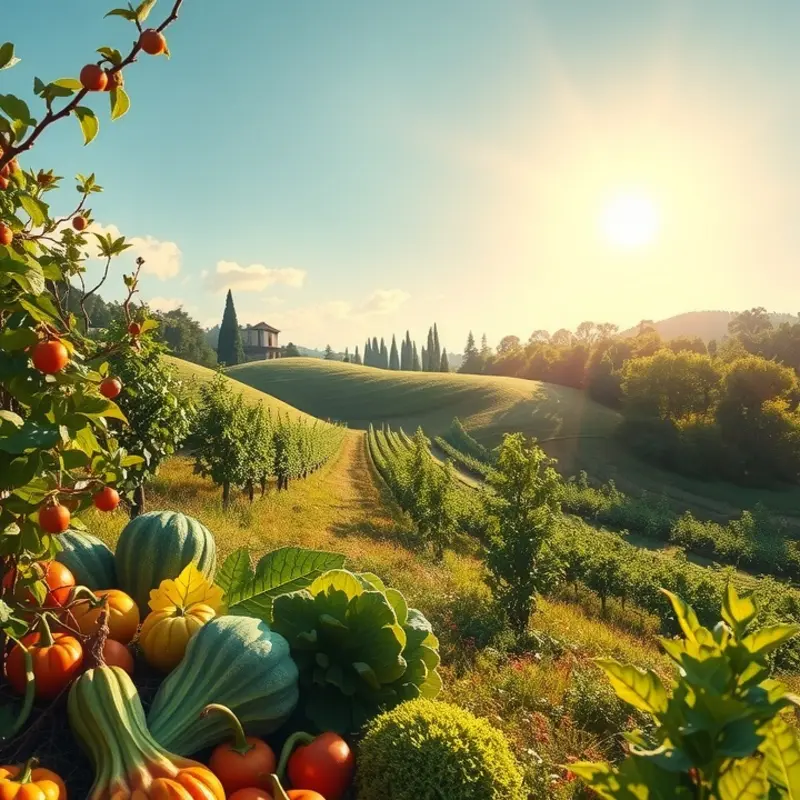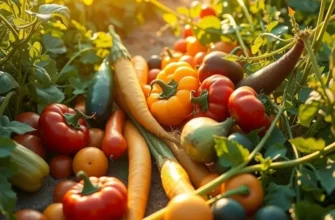Eating is not just about filling your stomach; it’s also a vital opportunity to nourish your body and mind. For health-conscious individuals just starting their nutritional journey, hydration-focused eating can simplify your choices while maximizing benefits. This approach emphasizes integrating hydrating foods into your diet to support overall health, energy, and well-being. Let’s explore accessible methods to make hydration a delightful part of your everyday eating habits.
Creating a Hydration-Rich Plate

When striving for a balanced diet, learning to create a hydration-rich plate can be transformative. This approach not only satisfies hunger but also efficiently contributes to your daily hydration needs. Let’s explore the vibrant world of hydration-rich foods that integrate seamlessly into everyday meals.
Fruits and vegetables are naturally high in water content, making them ideal candidates for a hydration-focused diet. Consider incorporating juicy fruits such as watermelon, strawberries, and oranges. These fruits contain over 80% water, providing instant refreshment. Watermelon, in particular, boasts an impressive 92% water content. It’s a refreshing treat on hot days and can be sliced into salads for added zest.
Leafy greens, like lettuce and spinach, also pack a hydrating punch with their high water content. Incorporating them into your daily meals is simple and effective. Use them as a base for salads or blend them into smoothies. Cucumber and celery are other hydration stars, each containing about 95% water. Not only do they add crunch to salads, but they also make great snacks alongside dips like hummus.
To add variety, consider foods like zucchini and tomatoes. Both are versatile ingredients that can enhance your meals while boosting your water intake. Zucchini is perfect for stir-fries or spiralized as a noodle substitute. Tomatoes, whether sliced, diced, or roasted, can enrich sauces and salads while hydrating you.
Another practical tip is to integrate soups and broths into your meals. These liquid-based dishes are not only comforting but can be loaded with vegetables that increase their hydrating properties. Opt for clear soups packed with vibrant veggies to maximize water content.
Preparation techniques also play a vital role in maintaining the hydration content of these foods. Steaming or grilling vegetables preserves their water content better than deep-frying. Consider lightly steaming broccoli or grilling bell peppers to keep dishes hydrating and nutritious.
Changing how you integrate hydration into your cooking can be fun. Create colorful fruit-infused waters by adding slices of high-water-content fruits like kiwi and citrus. Experiment with adding herbs, such as mint, to these infusions for an aromatic twist. These refreshments not only taste great but subtly encourage greater water consumption.
By focusing on high-water-content foods and integrating them into every meal, you can enhance your nutrition while meeting hydration goals. This strategy offers an easy way to stay refreshed without overwhelming daily routines. Plus, it supports the principles of easy plant-based eating by naturally incorporating more fruits and vegetables into your diet.
Crafting a hydration-rich plate requires more than just awareness of the water-rich foods available. It involves creatively incorporating them into your meals through thoughtful preparation and innovative presentation. With these practical tips and a little culinary adventure, you can enjoy a delicious diet that keeps you hydrated and healthy.
Quenching Thirst with Flavorful Choices

Hydration often conjures the image of a glass of water, but expanding this notion opens a world of culinary possibilities. To integrate hydration into your daily routine, consider the medley of flavors and nutrients that hydrating foods and beverages provide.
Starting your day on a refreshing note, smoothies can be both hydrating and nourishing. A blend of water-rich fruits like watermelon, cucumber, or strawberries creates a juicy base. Adding leafy greens such as spinach not only boosts hydration but also infuses necessary nutrients. For a twist, incorporate ingredients like coconut water or herbal teas as a liquid base, enhancing both flavor and hydration.
Midday, elevate your salads by combining hydration-rich vegetables. Think crisp lettuce, juicy tomatoes, and cool hydrating cucumbers. Pair these with fruits like oranges or grapefruit, whose high water content ensures a refreshing taste. To prevent overdressing your salads, consider emulsions with a base of fragrant, herbal teas instead of heavier options. This approach offers flavor with fewer calories, allowing the freshness of your salad to shine.
Moving onto beverages, herbal teas serve as an excellent choice, offering hydration while imbuing your day with varied tastes. Brew selections featuring ginger or peppermint to enjoy their soothing qualities. The gentle digestion aid provides a multi-faceted approach to your nutrition goals. Herbal teas can be cooled for a refreshing iced version, sustaining hydration levels throughout the day.
For those cooler days, soups and broths can be an ideal hydration source. Craft them with plenty of vegetables such as celery, leeks, and zucchini that naturally contain high water content. Homemade broths not only hydrate but also provide a canvas to infuse aromatic herbs and spices, elevating both taste and health.
Customizing these meals offers a way to cater to individual preferences and nutritional needs. Try adding chia seeds to smoothies or soups for an extra hydrating kick—these seeds absorb liquid, enhancing texture and nutrition. With salads, mild cheeses or nuts can add richness without overloading calories.
For more ideas on how to diversify flavor profiles while maintaining hydration, you might find this guide on Flavor Boosters Without Salt useful.
Through these tasty and innovative selections, staying hydrated becomes not just an obligation but a delightful part of your dining experience. By thoughtfully choosing ingredients and exploring different meal preparations, you turn hydration into a continuous, rewarding habit.
Final words
Embracing hydration-focused eating allows you to prioritize not only your daily water intake but also the nourishing benefits that come from fruits, vegetables, and other hydrating foods. By filling your plate with vibrant, water-rich choices, you can enhance your overall wellness without complicated meal planning. As you start this journey, remember to experiment with flavors and find what delights you the most. Eating healthily is a personal journey—discover the joy in nourishing your body and see how it transforms your energy and vitality.







